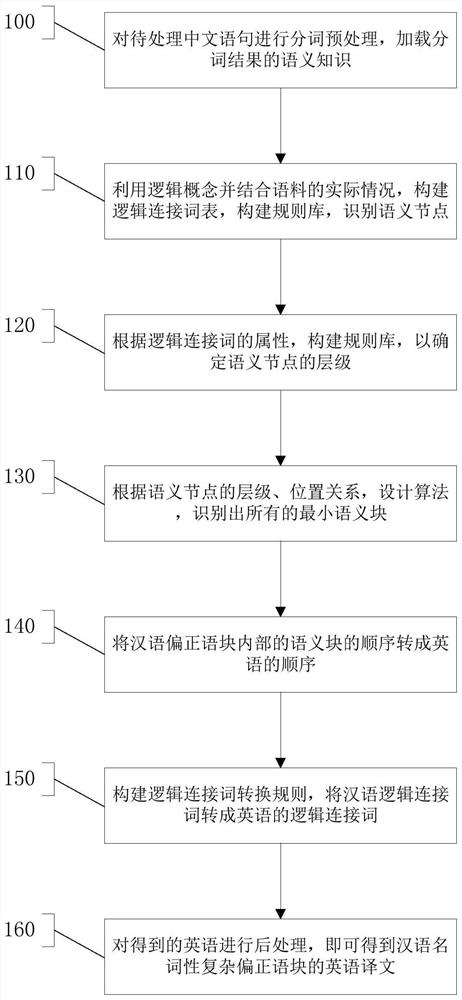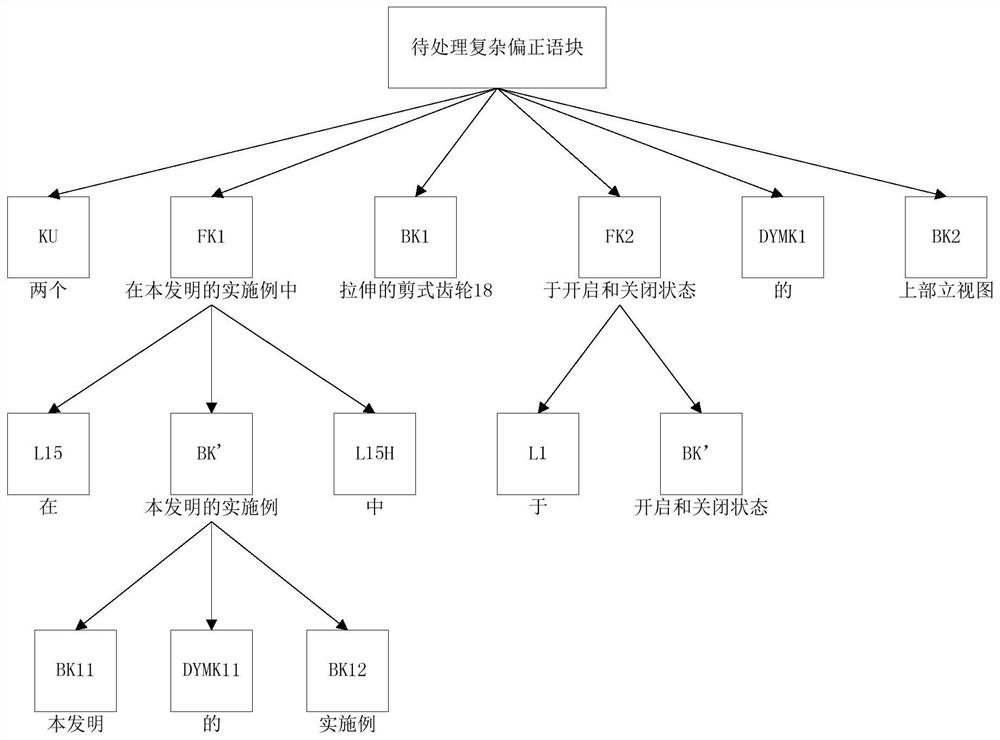A method and system for semantic analysis and Chinese-English ordering based on the smallest semantic block
A semantic analysis and semantic block technology, which is applied in semantic analysis, natural language translation, natural language data processing, etc., can solve the problem of high applicability of word templates, no in-depth mining of noun complex partial semantic analysis and semantics Hierarchical tree, no specific scheme for Chinese-English ordering, etc.
- Summary
- Abstract
- Description
- Claims
- Application Information
AI Technical Summary
Problems solved by technology
Method used
Image
Examples
Embodiment 1
[0178] This embodiment provides a method for semantic analysis of complex and partial noun blocks based on minimal semantic blocks, and a method and system for ordering Chinese and English. The important meaning carriers in natural language are nouns, so it is necessary to modify the nouns from multiple angles and at multiple levels. In terms of semantic categories, modifiers mainly define one or more aspects of the noun's nature, state, feature, description, time, location, quantity, scope, function, and material. Based on translation needs, through comparison, it is found that there are a large number of language fragments with equivalent meanings, that is, semantic blocks, in Chinese and English noun complex and partial lexical blocks. The smallest semantic block is the smallest semantically equivalent word or a combination of several words based on the comparison of Chinese and English noun complex and partial words. The length is not fixed, it can be one word or several w...
Embodiment 2
[0273] The technical problem to be solved by the present invention is to identify the smallest semantic block inside the partial positive word block in the Chinese nominal complex partial positive word block, and on this basis to realize the translation of the nominal complex partial positive word block in the Chinese-English patent, it is necessary to investigate A certain scale of Chinese and English noun complex partial orthographic blocks determines the basis for dividing the smallest semantic block, and has a strong dependence on the field of the text.
[0274] In the present invention, the concept category is used as the reference for segmentation information extraction, and on this basis, the production rules are further used to identify the semantic nodes of the smallest semantic block. Remove and add semantic nodes to identify all the semantic nodes of the smallest semantic block and determine its level, design an algorithm for combining semantic nodes, identify all th...
Embodiment 3
[0276] In this embodiment, a specific application example of a method for semantic analysis of complex and partial noun blocks based on minimal semantic blocks and a method for Chinese-English ordering is given.
[0277] like image 3 shown, the Chinese sentence to be processed "two upper elevation views of the stretched scissor gears 18 in the open and closed states in the embodiment of the present invention". This example has 5 minimal semantic blocks, namely BK "Invention", BK "Embodiment", BK "Scissor Gear 18", BK "Open and Closed State", BK "Upper Elevation View", where KU " "Two" can be judged as a modified semantic block according to its concept category being quantitative concept and block head position. The semantic nodes of this example are L4 "in", DYMK "of", L1H "in", and L4 "in", and five smallest semantic blocks are generated from this semantic node. It should be noted that the "de" after "stretch" can be a pure verb according to the conceptual category of "str...
PUM
 Login to View More
Login to View More Abstract
Description
Claims
Application Information
 Login to View More
Login to View More - R&D
- Intellectual Property
- Life Sciences
- Materials
- Tech Scout
- Unparalleled Data Quality
- Higher Quality Content
- 60% Fewer Hallucinations
Browse by: Latest US Patents, China's latest patents, Technical Efficacy Thesaurus, Application Domain, Technology Topic, Popular Technical Reports.
© 2025 PatSnap. All rights reserved.Legal|Privacy policy|Modern Slavery Act Transparency Statement|Sitemap|About US| Contact US: help@patsnap.com



